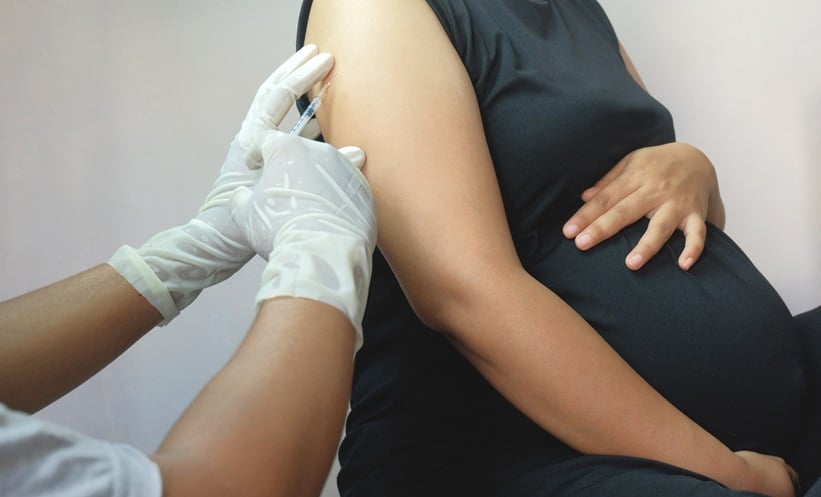Authors: *Petya Andreeva,1,2 Ivelina Oprova1,2
1. Shterev Hospital, Sofia, Bulgaria
2. South-West University, Blagoevgrad, Bulgaria
*Correspondence to [email protected]
Disclosure: The author has declared no conflicts of interest.
Keywords: Endometrial preparation protocols, frozen embryo transfer (FET), platelet-rich plasma (PRP), progesterone (P4), recurrent implantation failure (RIF).ponin.
Citation: EMJ Repro Health. 2025;11[1]:23-26. https://doi.org/10.33590/emjreprohealth/KTYA1332
![]()
Frozen embryo transfer (FET) protocols play a pivotal role in assisted reproduction, with ongoing research focused on optimising outcomes through precise hormonal management and endometrial preparation. Progesterone monitoring during the luteal phase remains a critical yet debated factor influencing implantation success and pregnancy maintenance. In parallel, novel adjunct therapies, including intrauterine platelet-rich plasma (PRP) infusion, are under investigation for their potential to enhance endometrial receptivity, especially in patients with recurrent implantation failure (RIF). These areas of study highlight the evolving complexity of FET management and the ongoing pursuit of personalised treatment strategies to improve reproductive outcomes.
NATURAL VERSUS PROGRAMMED FROZEN EMBRYO TRANSFER IN OVULATING WOMEN: OUTCOMES AND RISKS
With FET cycles rising worldwide, this year’s European Society of Human Reproduction and Embryology (ESHRE) Annual Meeting spotlighted endometrial preparation in ovulatory women as a key factor for success.1,2 A dedicated session, titled ‘Paris on Ice: Innovations in FET Cycles’, showcased emerging data comparing natural and programmed regimens, highlighting the shift towards safer, more individualised approaches.
A pivotal multicentre RCT compared natural ovulation and programmed endometrial preparation in 4,376 women who were ovulating (aged 20–40 years) undergoing single frozen blastocyst transfer.3 Participants were randomised to either a natural regimen (n=2,185), involving ultrasound-monitored follicular development, or a programmed regimen (n=2,191), using exogenous oestrogen and progesterone (P4) once endometrial criteria were met.
The results showed that both methods produced comparable live birth rates: 51.2% in the natural ovulation group and 50.1% in the programmed group. Similarly, healthy live birth rates were almost the same, at 41.7% and 40.9%, respectively. However, notable differences were observed in maternal safety. The natural ovulation group experienced significantly lower risks of clinical pregnancy loss (14.0% versus 17.0%), hypertensive pregnancy disorders (6.1% versus 8.8%), and postpartum haemorrhage (2.0% versus 6.1%). These differences were both statistically significant and clinically important, representing relative risk (RR) reductions between 18% and 68% for these complications.
This trial stands out from previous smaller studies, which were primarily focused on pregnancy and live birth rates, and lacked the statistical power to detect differences in obstetric complications. In contrast, this study was specifically designed to assess maternal health outcomes, offering new evidence to guide practice. While some variability existed in luteal support protocols, and both true and modified natural cycles were included, the results highlight a clear trend: natural ovulation regimens may offer a safer approach to endometrial preparation without compromising effectiveness.
This study contributes valuable data to the growing discussion about tailoring FET protocols based on both reproductive and obstetric outcomes. For women who ovulate regularly, natural cycle FET may now be considered the preferred approach, offering a favourable balance between efficacy and improved maternal safety.
MONITORING SERUM PROGESTERONE IN ARTIFICIAL FROZEN EMBRYO TRANSFER: STILL CONTROVERSIAL
The optimal management of luteal phase support in FET cycles with artificial endometrial preparation remains under debate, particularly in cases of low serum P4 levels on the day of embryo transfer. Two recent prospective studies offer differing insights into whether individualised P4 supplementation improves clinical outcomes in this population.
The first study, a single-centre RCT conducted between May 2021–September 2024, included 824 patients with P4 levels <10 ng/mL undergoing artificial FET with micronised vaginal progesterone (MVP).4 Patients were randomised to receive either standard MVP 800 mg daily or the same regimen plus 50 mg intramuscular (IM) P4. The IM P4 group had significantly higher clinical pregnancy (39.3% versus 32.0%; p=0.029) and ongoing pregnancy (35.2% versus 28.6%; p=0.044) rates, with RRs of 1.23 and 1.22, respectively. These results support the benefit of monitoring serum P4 and using IM supplementation for patients with suboptimal P4 levels.
Conversely, a second prospective study conducted at a tertiary fertility centre from April 2021–December 2024 included 270 patients undergoing single blastocyst FET in artificially prepared cycles. In this trial, 87 patients with P4 <10 ng/mL were randomised to either continue MVP 400 mg twice daily or increase to 400 mg three times daily.5 No significant differences in ongoing pregnancy rates were observed between patients with P4 ≥10 ng/mL (31.1%) and those with P4 <10 ng/mL (27.3%), nor between the rescue and non-rescue low P4 subgroups. Adjusted odds ratios for ongoing pregnancy rates were not statistically significant, and no alternative serum P4 cutoff point emerged. These results suggest that moderate increases in vaginal P4 alone may not substantially improve outcomes in patients with low P4 levels.
Taken together, these studies highlight a critical gap in consensus on optimal luteal phase support strategies in artificial FET cycles. While the first trial supports the benefit of IM P4 supplementation for patients with low P4, the second study casts doubt on the reliability of serum P4 thresholds and the efficacy of adjusting vaginal P4 alone.
Future multicentre randomised trials are essential to elucidate whether the route, dosage, or formulation of progesterone beyond serum concentration alone plays a critical role in optimising FET outcomes. In the absence of definitive guidelines, individualised strategies based on progesterone monitoring and customised supplementation may yield the most favourable outcomes for select patient populations.
INTRAUTERINE PLATELET-RICH PLASMA IMPROVES PREGNANCY OUTCOMES AND LIVE BIRTH RATES IN RECURRENT IMPLANTATION FAILURE: A META-ANALYSIS
Successful embryo implantation depends not only on the quality of the embryo but also on sufficient endometrial receptivity. This critical determinant of reproductive outcomes was a primary focus of the session titled ‘Using Big Data to Investigate Implantation and Early Pregnancy’, with particular emphasis on RIF. RIF is characterised by the inability to achieve pregnancy following multiple transfers of high-quality embryos and affects around 10% of patients undergoing embryo transfer. It remains a significant clinical challenge, largely due to the scarcity of effective treatments addressing endometrial dysfunction.
Among the proposed therapies, intrauterine infusion of PRP has been investigated for its potential to enhance endometrial growth, vascularisation, and embryo–endometrial interaction.6 While initial studies reported encouraging outcomes, subsequent trials produced inconsistent results, leading the ESHRE RIF Working Group to advise against routine clinical use. However, this recommendation was based on outdated meta-analyses with limited sample sizes and substantial methodological heterogeneity.
To provide updated evidence, a comprehensive meta-analysis was conducted, including 31 controlled trials (n=3,813), of which 21 were RCTs. PRP infusion was associated with significantly improved outcomes. Biochemical pregnancy rates increased (RR: 1.56), particularly in RCTs (RR: 1.80), andclinical pregnancy rates were also higher (RR: 1.67; RCTs: 1.93 versus 1.40). PRP significantly reduced miscarriage rates, both biochemical (RR: 0.51) and clinical (RR: 0.44), and more than doubled the likelihood of live birth or ongoing pregnancy (RR: 2.36).
Despite underlying heterogeneity, this analysis provides the most robust evidence supporting the use of PRP as a promising adjunct in endometrial preparation forFET in patients with RIF to date.
CONCLUSION
Compelling evidence supports natural ovulation protocols over programmed regimens in FET for women who are ovulating, demonstrating comparable efficacy with improved maternal safety. Nevertheless, the optimal approach to luteal phase support in artificial cycles remains unresolved, as current studies present conflicting findings regarding the clinical relevance of serum progesterone monitoring and tailored supplementation. Intrauterine PRP infusion shows promising results in patients with RIF, but further randomised trials are required to substantiate its utility and guide personalised FET strategies.







